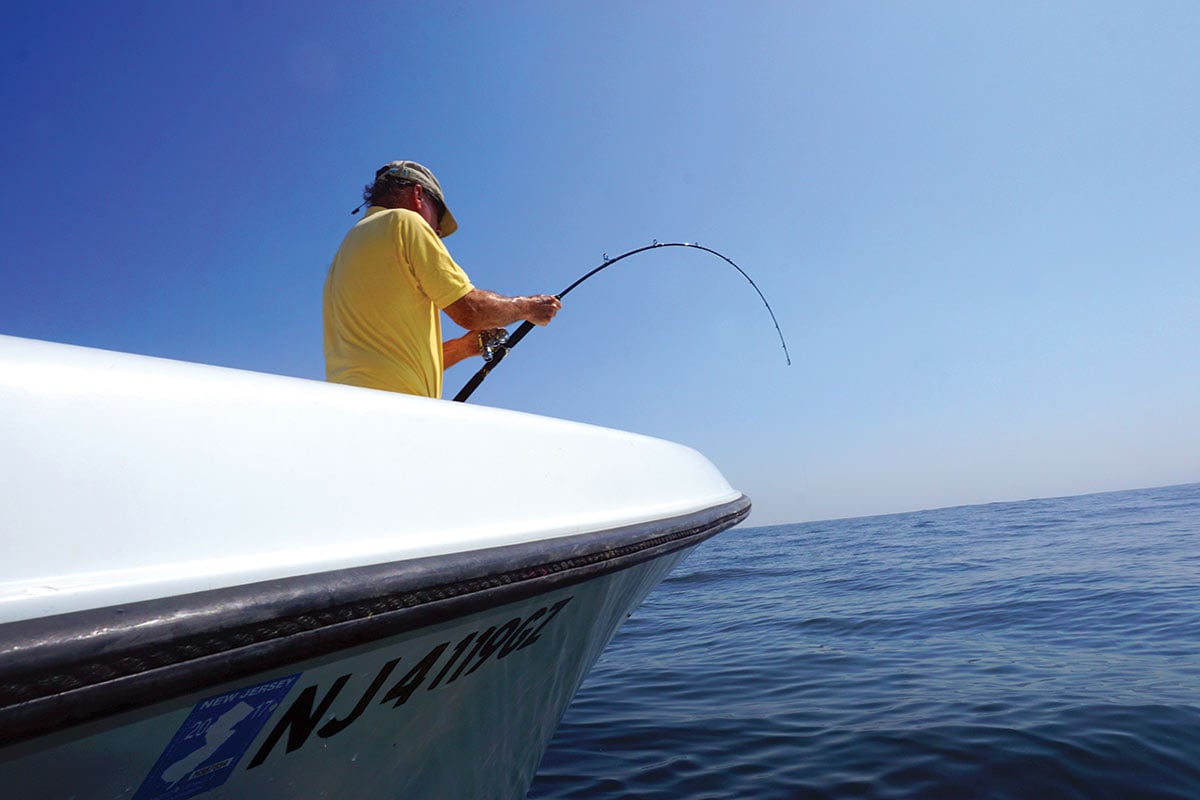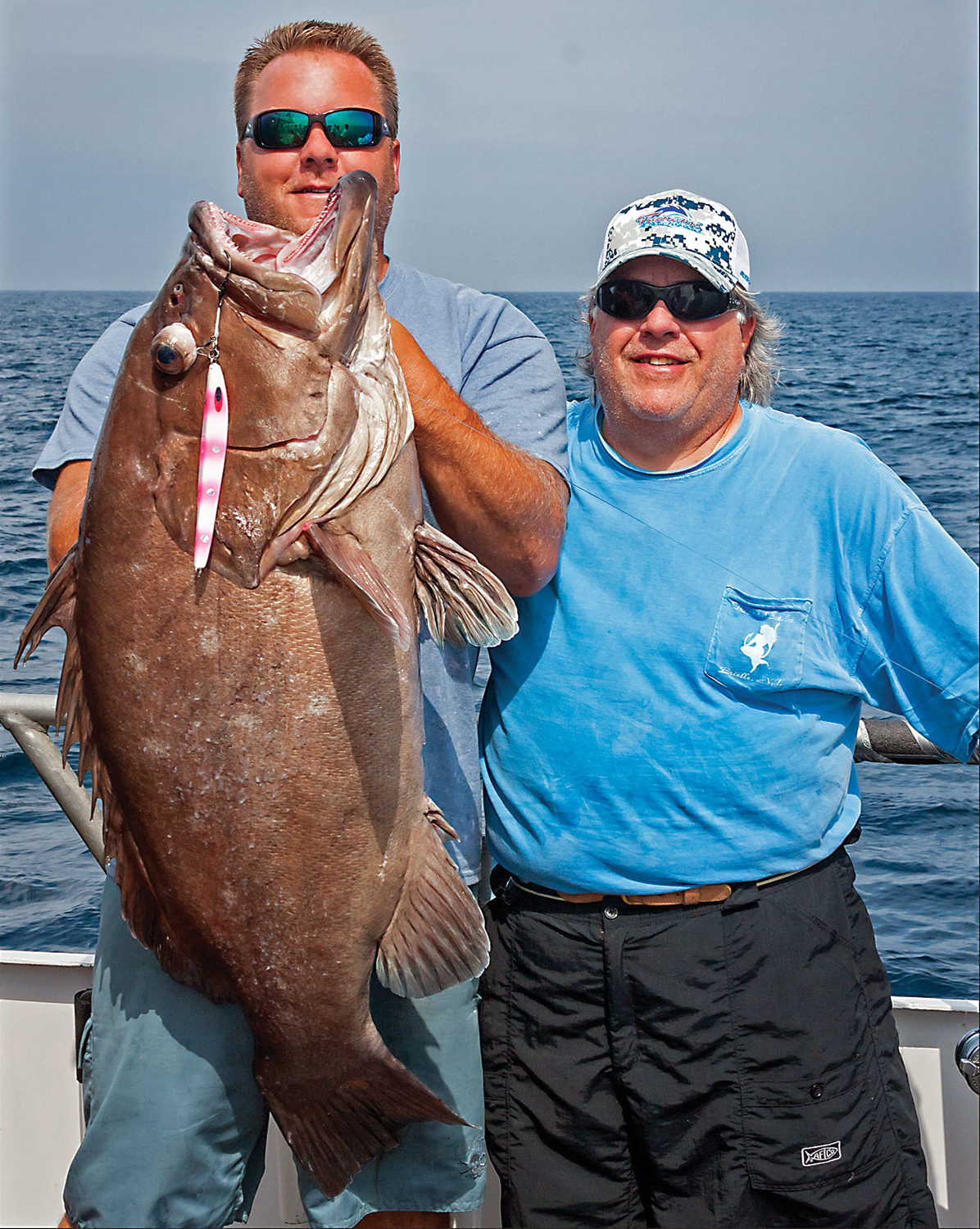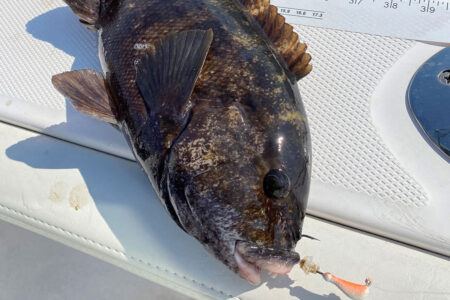
Slow pitch jigs differ greatly from other styles, and the approach to fishing them is equally different.
It’s said that the “slow pitch” jigging fishing technique was born in Japan a decade ago when Sato Norihiro sat in study of the water in front of him. As big fish besieged smaller fish, Mr. Norihiro saw how tprey had nowhere to escape, thus foaming the water surface in a boil. He was so intrigued by the sight of the blitz that he jumped into the sea to observe the action up close, intently studying how predatory fish went about catching smaller fish:
- The bigger fish first attacked the small fish which were shocked and stunned after collision during the assault, thus falling in defoliation form.
- Big fish would then turn their attention to wounded prey fleeing in helical fashion.
- Finally, predatory fish would focus on prey not hurt during the initial attack but fleeing in straight line, away from the group.
“Through this natural phenomenon, Sato san started to think, ‘why not make a jig with a longer time-lapse fall to imitate a shocked or stunned bait fish’ so that the big fish will have more chance to bite the jig,” said Frank Cheung, managing director at Maxel Reels. Frank explained that it was Sato Norihiro who developed the first slow-sinking jig, testing it along the shallow waters like where he watched those first fish boils.
“He even created a new way of pitching the rod,” Cheung said, explaining this as “the most basic beginning of slow jigging technique.”
Mother of Invention
Over the past two decades, Northeast and Mid-Atlantic anglers have been introduced to a variety of new jigging tactics and techniques. While many of us were introduced at an early age to the rather exhausting approach to speed jigging or squidding, newer designs out of China, Hong Kong and Japan – where many of the world’s most cutting edge tactics are often developed, often out of necessity – in the first part of the 21st century we’ve also been introduced to flutter style jigs, and the long and narrow Butterfly jigs or beetle-shaped Lucanus from Shimano.
The slow pitch style jigs differ greatly from others on the market today, and the approach to fishing them is equally different. Slow pitch jigs are center-weighted and mostly leaf-shaped in design, allowing them to dig and dance in more horizontal fashion on the drop. Whereas narrower jigs and Butterfly style offerings are designed for more vertical deployment with anglers cranking hard from bottom up or allowing for a slight flutter straight down on the drop, the center-weighted slow pitch jigs move with a more pronounced, side-to-side swing as they fall (quite similar to how Sato Norihiro found prey fish escaping horizontally).

“Typically, jigging in America is you drop it down to the bottom and you bring it all the way to the top,” said Jerry Gomber, Director of Development for Bimini Bay Outfitters and the Folsom Corporation in Mahwah, NJ. “Slow pitch focuses on a certain piece of water and the guys that are intensely into this are going to use color coded lines so that they can know exactly that they’re on the spot where sonar is telling them the fish are so they can work that zone intensively.”
In the past several years, the slow jigging style has been one of the fastest growing techniques in Japan, and Cheung said he has watched the technique grow throughout Southeast Asia. “Chinese fishermen started to experience slow jigging in early 2016, now more and more speed jiggers in China including Hong Kong and Macao fishermen and fisherwomen have changed to slow jigging style due to its effectiveness and advantage compared with speed jigging,” he said.
For early adopters in the U.S. like Dave Arbeitman from The Reel Seat in Brielle, NJ who’s been in the slow pitch game the last 3 years, it’s added a new element of excitement when fishing local species. “The difference between this and vertical jigging is a lot less effort,” Arbeitman said, adding that he’s caught striped bass, bluefish, sea bass and tilefish on the system. “It’s very much like the Butterfly jigging in that it’s a complete system being rod, reel, line and jig, and you need all of those components to do it properly.”
Since hitting a 67-pound snowy grouper offshore last summer and running a series of standing room only seminars in his New Jersey shop this past spring, Arbeitman said interest has expanded throughout the Northeast. “We’ve had people calling every couple of days, and we sell a couple of outfits a week,” he said.
Keep in Touch
Slow jigging can target a wider range of species from bottom fish like grouper, sea bass and cod, to fast swimming targets like tuna, blues and stripers. “The fun part of slow jigging is to use thinner PE (Poly Ethylene braid) line with light tackle to catch big fish, you don’t need big muscle exercise,” Cheung added, explaining how anglers accustomed to feeling tired after a few hours of speed jigging will appreciate the slow-pitch style. “So slow jigging is suitable for a much wider range of persons, old or young, men or women.”
Gomber describes the Maxel jigs in particular as digging and spinning horizontal as you release the tension from the trip of the rod. “If you’ve got fish at 40 feet, you can fish 45 to 35 and cover that whole thing,” Gomber said, recommending a slight lift of the rod tip while using the line recovery out of that drop gear box to keep you in touch with the lure. “You’re staying in touch with the lure, that’s the key element to this method of jigging,” he said.

For Capt. Fernando “PQ” Almada of Catch22 Sportfishing out of San Carlos in Sonora, Mexico, the tactic has been highly effective for yellowtail jack and large grouper inhabiting the deepwater reefs where he fishes. “From time to time I find yellowtail in much deeper water, 500 to 600 feet, but they can be suspended let’s say at 250 or 200 feet, and that is when the color coded line comes into play, I can target them without having to drop all the way down every time, makes jigging more efficient.”
“If I am targeting grouper I stay really close to the bottom and most of the times do a combination of slow jigging with a fast jerk here and there just to try and get a reaction from a fish,” Almada said.
For those who’ve used rigged Butterfly jigs, Arbeitman said the true center-weighted slow pitch style is a bit different. “The assist hooks for most of the jigs are specifically for two hook configuration on the same piece of assist cord, and the hooks face each other,” he said, adding “for jigs a little on the longer side though, guys will add another hook at the bottom.”
Lighten Your Load
Like most every new technique in today’s world of sportfishing, it’s been the advent of braid that has presented these new offerings and opportunities. As thinner diameter fiber lines have allowed anglers to go lighter in lure weights while increasing sensitivity, the poly ethylene world has also pushed tackle manufacturers (rods and reels) to go lighter in order to create these new techniques.
“The softness of the rod is important,” Gomber said of the slow pitch method of jigging. “The whole thing about this was to scale down the tackle and to work a much smaller piece of water.”
As Capt. Jim Freda noted in his June 14, 2018 weekly Offshore column in The Fisherman weekly edition, slow pitch rods have been designed to bend in a calculated, fully parabolic manner which allows the fulcrum of the lever to be centered much closer to the angler’s hands, reducing pressure on the angler while still maintaining very significant pressure on the fish.

Folsom’s Nick Cicero explained that the balanced Maxel reel and rod system for example allows the reel to absorb most of the work load with rugged gearing that is designed to allow effortless cranking under maximum strain situations. “It’s a remarkable system that once an angler tries it and understand both the physics involved and the application it is an eye opening experience and one that will change the way people approach catching big hard fighting fish,” he said.
In other words, when used in conjunction with correctly designed gear, it’s no longer painful to apply maximum pressure on strong gamefish. “When I started jigging 14 years ago I used to think that it was all about speed,” said Capt. Almada. “Now I think it is more about a good pace or rhythm.” Where larger, bulkier 7-foot rods were generally pretty tiresome for speed jigging, today’s newer slow pitch rods make it easier for his charters to jig their way through an entire trip.
“When using these new rods either the Tsunami slow pitch rods or the Maxel platinum short rods the jigging becomes pretty much effortless,” Almada said, adding “A lot of people don’t want to jig because they think it is too much work, my answer is always, you are not using the right gear.”
More Than Intended
Smaller, more powerful conventional reels designed to hold acres of braided line get the slow pitch job done right (Accurate Valiant, Shimano’s Ocea Jigger or Maxel Rage for example); center-weighted jigs will sweep horizontally from side to side on the way down when free from any line tension.
“Everything is scaled down, the Maxel Rage for example is high speed, a lot of ball bearings, and a lot of power,” Arbeitman explained, saying he’s caught 65-pound amberjack in 200 feet of water down in the Florida Keys spooled with 14-pound Fireline Crystal. “Everything works together, and you do most of the fighting with the reel so it doesn’t tax your body.

When the rod is lifted up and the soft tip allowed to “bungee” the jig upwards, the angler brings the tip down and takes a quarter- or half crank of the reel handle; it’s that brief, tension-free moment when the jig itself will do its thing.
“Sometimes slow works better for me and yes there are some days where the faster you go the more bites you get, but most of the time a medium paced jigging motion will work great,” added Capt. Almada. “All I find myself doing is letting the rod bounce the jig and I am just winding to catch up with the slack on the line, no effort at all.”
Tackle World’s Michael Kim said he sees this style of jigging as a jigging subcategory made of slow pitch, fast jigging and yo-yoing; he said Northeast striped bass sharpie John Skinner recently tried using their Jigging World slow pitch jigs for the very first time, but rather than simply letting the jig slow flutter down and doing slow little retrieves with pumping action and half-turn cranks, Skinner reverted to diamond jigging. “He didn’t get a bite the traditional way,” Kim laughed. “But is there only one way to use slow pitch jigs? No. Some days it will work when you actually slow pitch jig, other days it might be really fast, erratic motions to get them really riled up,” he said.
In terms of getting the center-weighted jigs to work as designed though, Kim said rod selection is critical. “On the fall, having a soft, sensitive tip allows the jig to do what it’s intended to do,” he said, explaining how the lift brings the jig up and the bend in the tip springs the jig upwards; but as the angler takes a short crank on the reel handle while dropping the tip subtly, that next moment without line pressure allows the jig to “dance” as Kim put it.

“It’s a lot more engaging on trying to attract bites with jigs like this, rather than sitting and trolling or fishing bait,” Kim added, saying that Tackle World owner Yong Yan himself has traveled the world fishing and has been slow pitch jigging since Jigging World was first launched. “He brings back what works,” Kim said, adding “These jigs will work for grouper, cobia, tuna class, and we have a lot of sea bass jigs.”
Cicero said it’s the braid revolution that has led to these evolving tactics through tackle design, providing more adaptive methods for folks in our region. “The manufacturers realized they could make reels that were so strong that we could change the way in which we fight fish which is by using the reel as a winch rather than simply a line storage container.”
“The rod blank designers, all of us working together, figured out a way of making rods now, little skinny rods that would bend in a hoop and not have to worry about breakage,” he added, describing how nano technology and reinforced rod wrapping has quickly advanced, making the price point more attractive to a larger segment of the angling population. “That technology is now available for a lot less, and it’s not just for slow pitch jigging but throwing poppers at tuna, it’s all of that.”
“It’s a matter of proportion,” noted Gomber. “You can now do with a small, light, very powerful package what you did with something big, bulky and heavy before.” Less is more fun, and sometimes extra effective.




